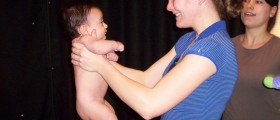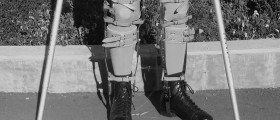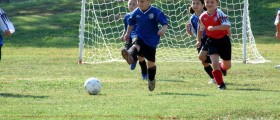
Spinal Cord Injury Leads to Paralysis
Spinal cord trauma is the medical term for all kinds of damage to the spinal cord. The cord may be injured directly or indirectly, perhaps from the damage which the surrounding blood vessels, nerves,tissues or bones have sustained. The location of the injury usually determines what symptoms will be present. It is quite normal to experience sensory losses and weaknesses below the point of the actual injury. The symptoms are determined by different ranges of severity depending on the completeness of the injury. There are a large number of complications which may be associated with spinal cord traumas, and these may or may not include shock, pressure sores, quadriplegia, paraplegia, paralysis of breathing muscles, painful sensations, muscle spasticity, loss of sexual functioning in men, loss of sensation, loss of bowel control, loss of bladder control, increased risk of urinary tract infections, increased risk of injury to numb areas of the body, contractures, skin breakdown, different sorts of pulmonary infections, deep vein thrombosis, other sorts of complications of immobility, chronic kidney disease and extreme blood pressure changes. There are numerous different types of injuries to the spine which may be associated with the onset of spinal cord trauma. These include assaults, gunshot wounds, industrial accidents, sports injuries falls, motor vehicle accidents and numerous others. A spine weakened by osteoporosis or rheumatoid arthritis may also be prone to spinal cord traumas caused by mere minor injuries. Direct types of injuries are also usually associated with spinal cord trauma. In most cases, spinal cord trauma happens in young individuals and is associated with certain types of risk factors.
Among the most frequent types of injuries connected with spinal cord trauma there are the lumbar sacral injuries which occur in the lower portion of the back. Some cases may affect the legs, and also the muscles which are in charge of controlling the bladder and the bowel movements. The most common types of symptoms associated with this type of injury include paralysis, weakness, increased muscle tone, sensory changes, painful sensations, numbness, bladder spasms, leakage, constipation and a loss of normal bladder and bowel control. Another type of injury which is often associated with spinal cord trauma is the thoracic injury which occurs at the chest level. The symptoms of such injuries may sometimes affect the legs. The most common ones include weakness, paralysis, painful sensations, increased muscle tone, sensory changes, numbness, bladder spasms, incontinence, constipation and a loss of normal bladder and bowel control. Other possible problems related to this type of injury may or may not involve trouble maintaining normal body temperature, abnormal sweating, and blood pressure problems. The third common type of injury which may be held responsible for the onset of spinal cord trauma is the so called cervical type of injury which affects the neck. This type of injury may affect the entire body, the legs and the arms. The most common list of symptoms includes paralysis, weakness, painful sensations, increased muscle tone, sensory changes, numbness, bladder spasms, incontinence, constipation, loss of normal bladder and bower control and certain breathing difficulties.
Diagnosis and Treatment
In order to be diagnosed properly, spinal cord trauma requires the patient to undergo certain types of examinations and tests. A physical exam which includes a neurological one is at the top of the priority list. An MRI or a CT scan may sometimes be required in order to evaluate the damage. Some rare cases may also call for myelogram and Somatosensory evoked potential testing. X-ray scans are often used in the process of diagnosis. Spinal cord trauma is a medical condition which requires immediate medical attention and needs to be treated as soon as possible. The swelling induced by spinal cord damage is usually taken care of by using certain types of corticosteroids. Some cases of spinal cord trauma may require a surgical intervention in order to fuse the broken spinal bones, remove all the damaged elements in the spine or remove any tissues or fluids which may be putting additional pressure on the spinal cord. Some cases of spinal cord trauma may require so called spinal traction. The majority of patients need to wear the spine braces for quite some time.
Life with Paralysis
Paralysis of certain body parts involves a loss of sensation along with numbness and in some cases it may even be fatal. Certain number of people may recover rather quickly and deal with paralysis rather good, depending on the individual case. The living environment of a person needs to be modified to a certain extent. It is a widely known fact that most people affected by spinal cord trauma spend most of their days bound to the bed or the wheelchair. Finally, their impaired mobility requires them to utilize various different sorts of assistivedevices.





-Causes,-Symptoms,-Diagnosis,-Treatment_f_280x120.jpg)









-in-Multiple-Sclerosis_f_280x120.jpg)

Your thoughts on this
Loading...